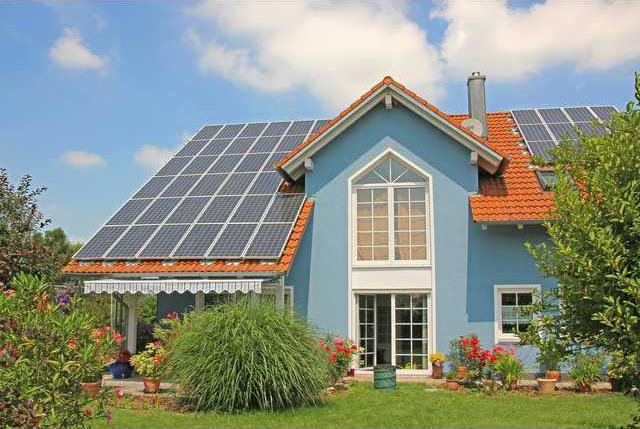The nation's capital is one of the more aggressive areas in the country pursuing a clean energy plan, and it plans to reach those goals by working in poor and wealthy neighborhoods alike.
The District of Columbia, which has said half its power will come from renewable sources by 2032, is requiring at least one-third of the money spent on installing solar power throughout the city go in low-income areas, The Atlantic reports.
Using solar power can reduce a home's electric bill by 10 to 30 percent, according to The Atlantic, and it can result in tax credits in many states. But despite reports that solar installation costs have gone down 70 percent in the last decade, homeowners still have to be ready to spend around $10,000 to achieve those savings.
That high cost can prevent families from installing or ordering solar panels, so the District City Council went door to door to explain the project. And since the council approved the measure, almost 90 people in low-income areas have had panels installed. The council told The Atlantic it plans to work with more affordable housing units that generally aim to keep costs low on installing solar panels.
"Affordable housing is unique," Jared Lang of the National Housing Trust told The Atlantic. "If the expenses go up if you make certain investments you can't raise the rent. You have to become more efficient."
That should be easier with solar panels on his 223-unit building. Lang estimated he will save $20,000 a year.
The District's efforts come after the Obama administration made it one of its goals to increase the prevalance of solar power across the nation, both in installation and in job availability. According to a July 19 White House announcement, low-income households can spend between 15 to 20 percent of their income on energy bills. The new Energy Savings for All Americans Initiative aims to bring one gigawatt of solar power to middle- and low-income households, 10 times as much as the president promised in his 2013 Climate Action Plan. The White House has also promised to use solar power as a means of job growth, saying it plans to make 75,000 jobs in the solar industry available by 2020.
The District of Columbia, which has said half its power will come from renewable sources by 2032, is requiring at least one-third of the money spent on installing solar power throughout the city go in low-income areas, The Atlantic reports.
Using solar power can reduce a home's electric bill by 10 to 30 percent, according to The Atlantic, and it can result in tax credits in many states. But despite reports that solar installation costs have gone down 70 percent in the last decade, homeowners still have to be ready to spend around $10,000 to achieve those savings.
That high cost can prevent families from installing or ordering solar panels, so the District City Council went door to door to explain the project. And since the council approved the measure, almost 90 people in low-income areas have had panels installed. The council told The Atlantic it plans to work with more affordable housing units that generally aim to keep costs low on installing solar panels.
"Affordable housing is unique," Jared Lang of the National Housing Trust told The Atlantic. "If the expenses go up if you make certain investments you can't raise the rent. You have to become more efficient."
That should be easier with solar panels on his 223-unit building. Lang estimated he will save $20,000 a year.
The District's efforts come after the Obama administration made it one of its goals to increase the prevalance of solar power across the nation, both in installation and in job availability. According to a July 19 White House announcement, low-income households can spend between 15 to 20 percent of their income on energy bills. The new Energy Savings for All Americans Initiative aims to bring one gigawatt of solar power to middle- and low-income households, 10 times as much as the president promised in his 2013 Climate Action Plan. The White House has also promised to use solar power as a means of job growth, saying it plans to make 75,000 jobs in the solar industry available by 2020.








